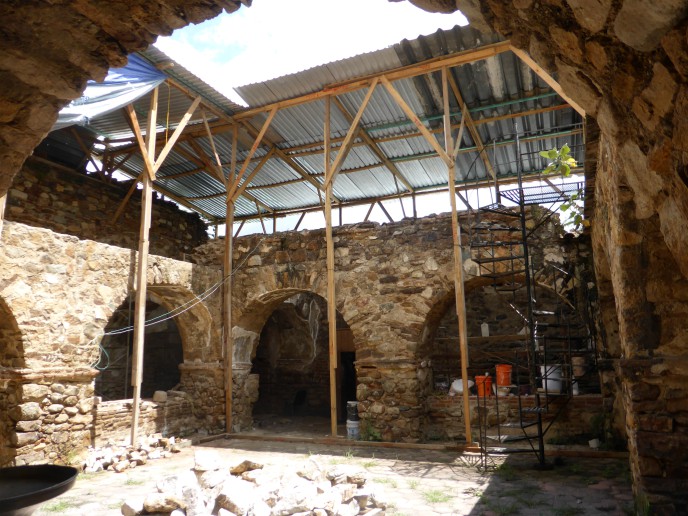Should beliefs or history decide if a building is a church or a museum?
“My main motivation in this research was to investigate what happens when religious spaces and objects are brought into the apparently non-religious domain of heritage through practices of restoration and conservation,” outlines Dr Alanna Cant, research fellow on the MEXRES project. To do so, she conducted ethnographic research in Santa Cruz Mixtepec. Located in the southern Mexican state of Oaxaca, the village is home to a majority Catholic population and a ruined 16th century Dominican monastery. The monastery is presently the focus of a heritage conservation project jointly managed and financed by the Mixtepec municipal authority, the Mexican federal government and a private cultural foundation. “I selected a site where local authorities were working together with heritage experts,” Dr Cant explains. “I wanted to see not only how conflict develops in such scenarios, but also the points at which these different perspectives agree and reinforce one another.” Competing views MEXRES research shows that stakeholders from the domains of religion and heritage hold very different perspectives regarding the nature of religious objects and spaces, their value and how they should be treated. “This results in competing views about not only where resources should be spent, but also what the building should ultimately be used for,” the fellow elaborates. Project research resulted in three main sets of observations. The first, Dr Cant notes, is that “studying the ways that religious and heritage actors engage one another during conservation projects not only tells us about religious heritage, it also helps us to understand the relationship of religion and non-religion/secularism in contemporary societies.” Second, rather than straightforward politics of culture or property ownership, religious heritage projects produce a relational social and material field in which the sacred and historic values of buildings and objects are negotiated. Finally, she reports, “the nature of these fields is characterised by particular kinds of emotions, aesthetics and ‘historicities’ – different understandings of the past and its importance to the present and the future.” Contributions to culture, identity and history The project’s work could inform more nuanced heritage practices and policies in different national contexts. As Dr Cant states: “It shows that although local communities or churches may broadly be in support of heritage projects, their understandings of the heritage site, and how it should be used, may still be at odds with typical heritage perspectives.” MEXRES findings also bring to the fore how legal designations and regimes of ownership can impact ways in which a religious community can continue to use a certain space for religious purposes. Dr Cant has actively shared information about MEXRES and its outcomes through journal articles, conferences and seminars, a workshop and a public lecture. She also continues to make all bibliographic and historical information regarding the community of Santa Cruz Mixtepec available to community members, depositing copies in the municipal and church archives. The fellow plans to build on this project for greater understanding of how Catholicism and the Catholic church as an institution contribute to understandings of culture, identity and history in Mexico.
Keywords
MEXRES, heritage, religious space, Mixtepec, Catholic, religion, culture, monastery, religious heritage







